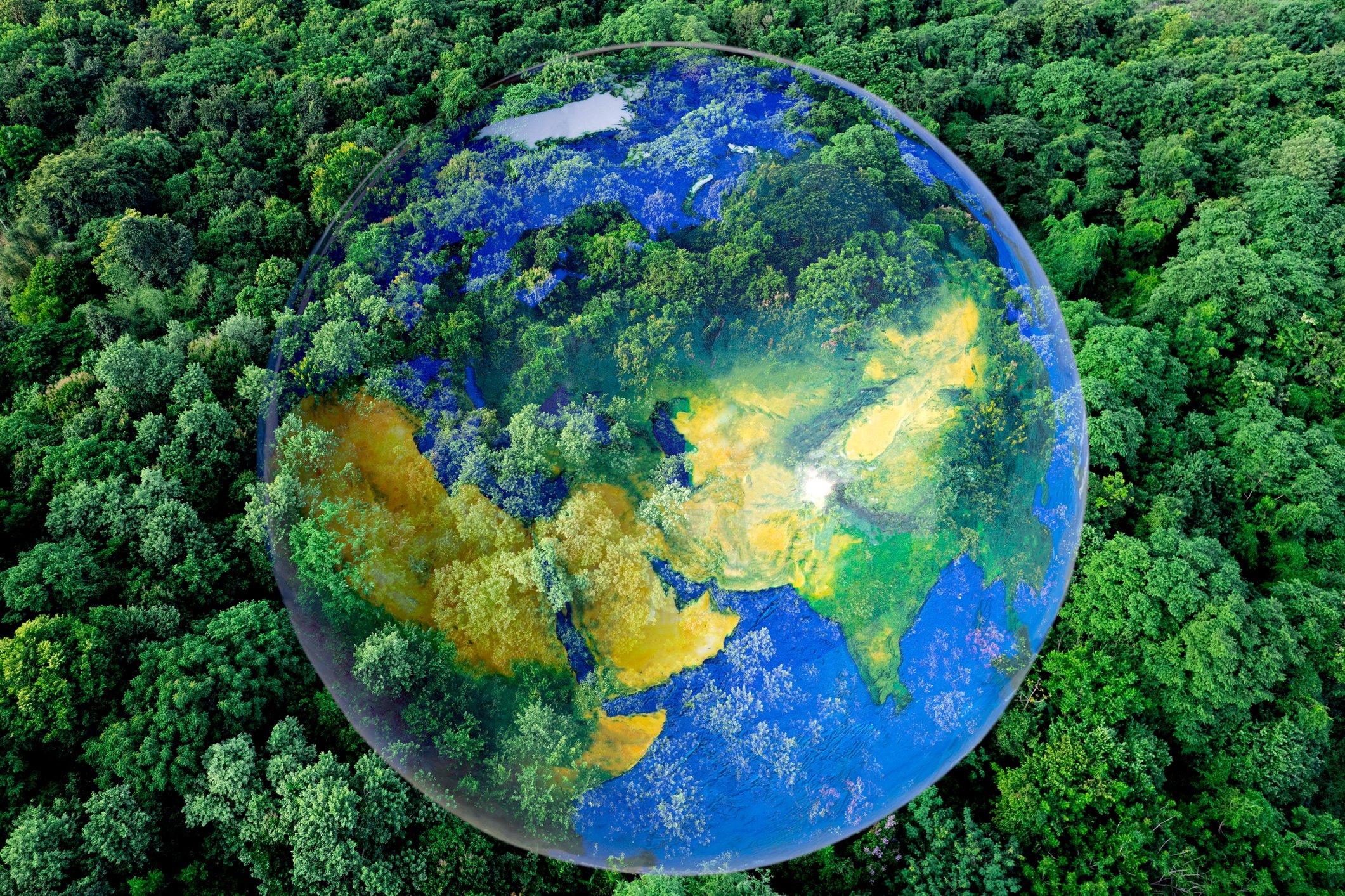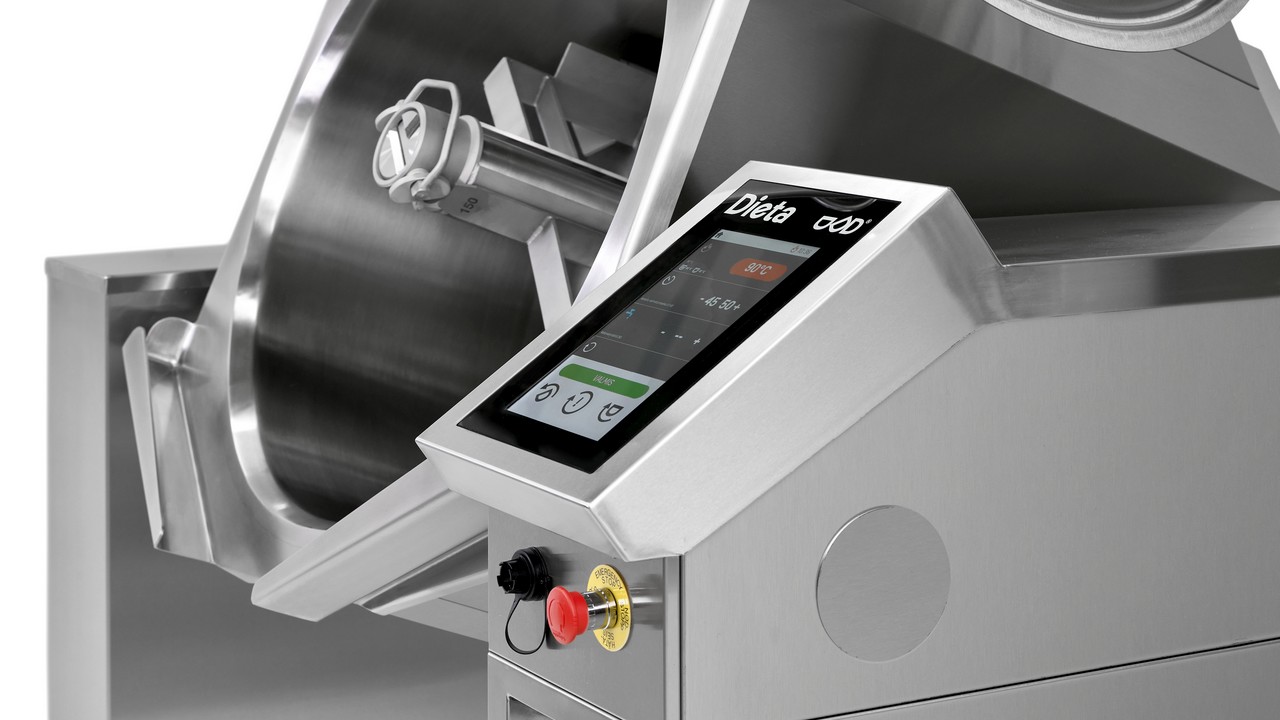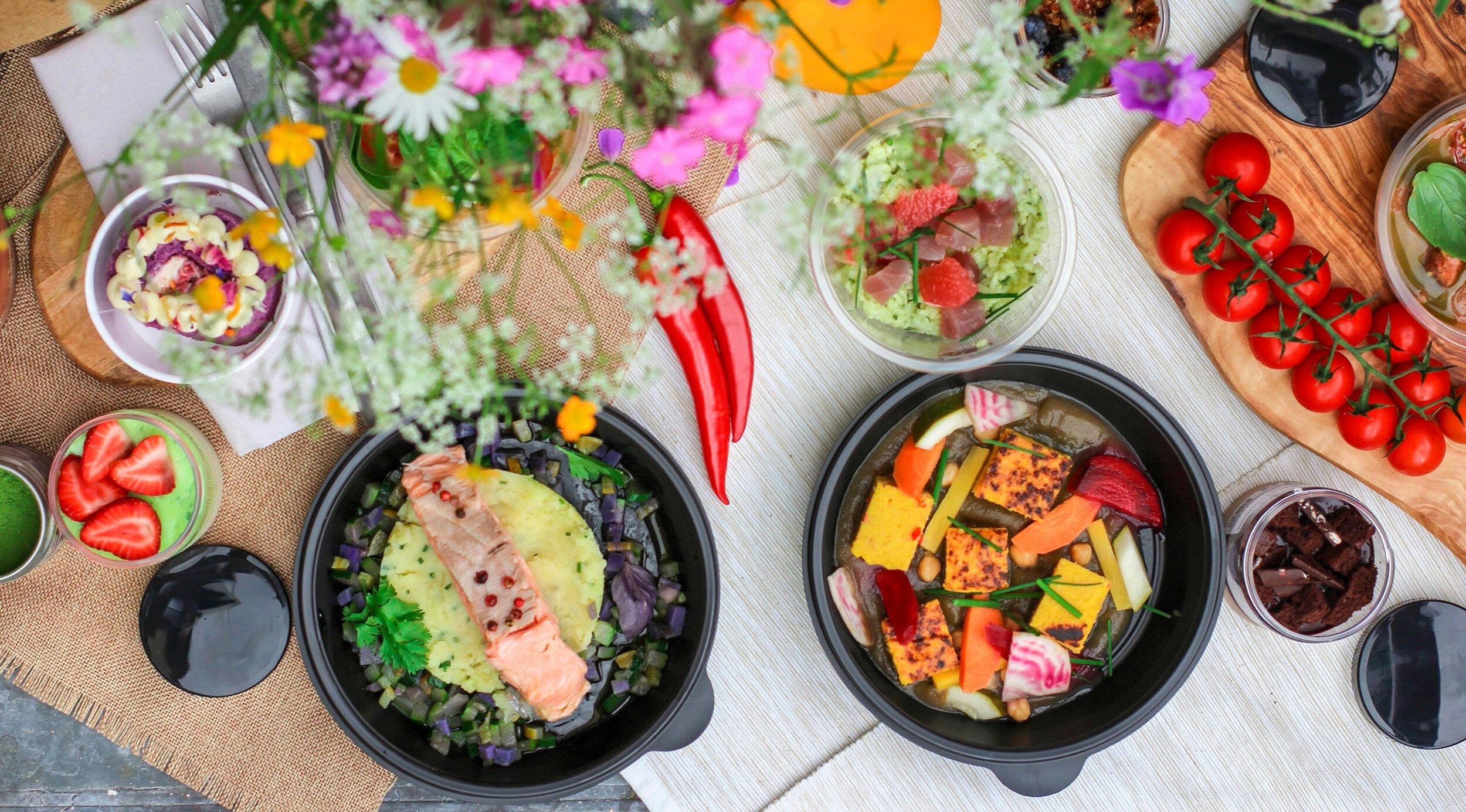In the Cook&Chill process with a mixer kettle, the kettle chills food by circulating cold water in the jacket. The chilling of food in the kettle is based on the temperature difference between the food and the water in the kettle jacket. The high chilled water flow rate through the kettle jacket and the low water temperature produce a very high cooling effect. As chilling water circulates to the ice bank and back to the kettle, Cook&Chill with mixer kettle is environmentally friendly with minimal water consumption.
Chilling performance
The principle of chilling with a mixer kettle is simple. The circulating water in the kettle jacket chills the kettle surface, chilling the food near the surface. The rotating mixer moves new warm food to near the surface area, which helps distribute the temperature evenly and makes chilling efficient. For this reason, there are four important factors affecting the chilling performance
- 1. the ability to distribute the temperature evenly in the food,
- 2. the temperature of chilling media circulated in the kettle jacket,
- 3. the flow rate of chilling media, and
- 4. the chilling surface area
Ability to distribute heat evenly
To get even chill effect, the mixing must “turn” food effectively - this varies by the structure of the food and by the mixing speed allowed by the food. It can be said that chilling times are always affected by what (recipe and ingredients) is cooked and how (process, mixing and fill rate) food is cooked. The general rule is, that for effective chilling
- mixing speed around 60-80
- liquid content at least 30%
- fill rate 70%
Temperature of chilling media
As chilling is based on the temperature difference between food and chilling media, the end temperature and chilling performance is always affected by the temperature of the chilling media. At the beginning of the chilling, when the food is near 90°C, the difference to chilling media is significant and chilling is fast. When the temperature of food gets lower, the temperature of the chilling media starts to be more important – As the lower temperature of the chilling media means a more temperature difference and faster chilling.
The kettle does not make the chilling media colder. So to achieve low temperatures chilling media must be ice water. Dieta kettles has different chilling systems for different chilling solutions, developed over the years to suit all needs.
The flow rate of chilling media
The higher the flow rate of chilling media through the kettle jacket faster and warmed water is replaced by chilled water. This way, the temperature of the chilling media inside the kettle jacket stays lower and increases chilling performance.
Chilling surface area
The kettle's size and form directly affect the chilling performance – more chilling surface, more efficient chilling. For this reason, Dieta kettles have a unique design where also center pillar is chilled. This increases the chilling surface by even 10%, compared to other kettles!




